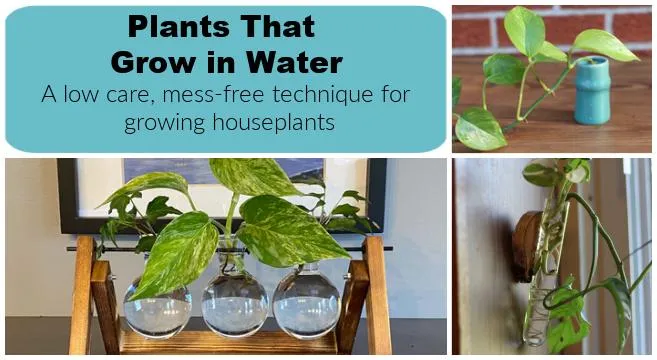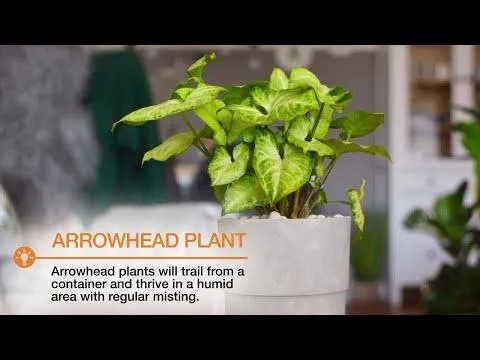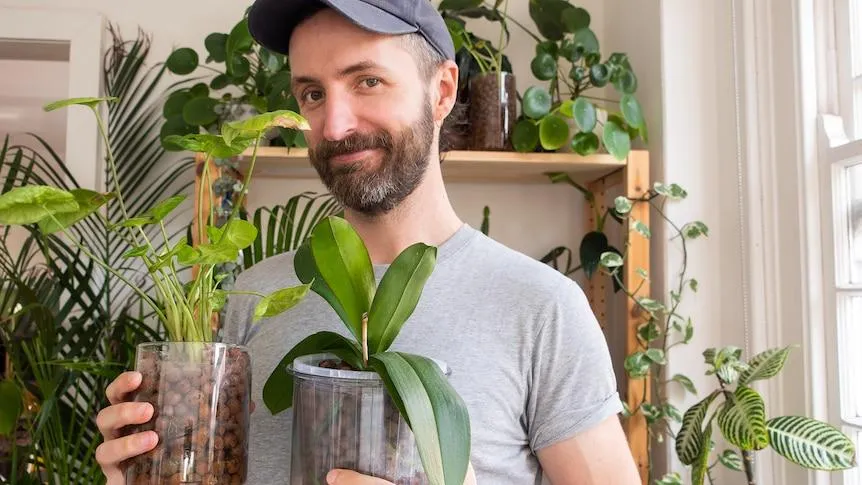Everything You Need to Know About Keeping Small Plants Indoors
If you’re looking to add some greenery to your indoor spaces but don’t have a lot of room, small plants are the perfect option. In this article, I’ll cover all the basics of successfully caring for miniature houseplants.
Choosing the Right Small Plants
When selecting small indoor plants for your home or office, consider factors like light needs, water requirements, and growth rate. Here are some top choices:
- Succulents – These drought-tolerant beauties like aloe, echeveria, and haworthia come in an amazing array of shapes and colors. Succulents are very low maintenance and can tolerate low light. They’re great for beginners.
- Peperomia – With their colorful foliage and compact size, peperomias add lovely accent plants. Varieties like peperomia caperata ‘Rosso’ withstand neglect well. They prefer moderate indirect light.
- Pothos – The devil’s ivy or golden pothos is nearly impossible to kill. Its trailing vines look lovely hanging from shelves or allowed to grow up a moss pole. Pothos does well in low light.
- Snake plant – Also called mother-in-law’s tongue, sansevieria has stiff, upright foliage in shades of green, yellow, and white. Snake plants thrive on infrequent watering and do well in very low light conditions.
Caring for Small Indoor Plants
Once you’ve selected your miniature plant partners, here are some tips for providing proper care:
- Light – Evaluate how much natural sunlight your space receives and match it to your plant’s needs. Many small plants thrive in low or indirect light from a bright windowsill or under grow lights if artificial is needed.
- Water – Allow soil to dry out between waterings to prevent root rot. Stick your finger in the soil and water when the top inch feels dry. Succulents only need water every 1-2 weeks on average.
- Fertilizer – During the growing season, use a diluted liquid fertilizer every 2-4 weeks according to label instructions. Avoid over-fertilizing, which can damage plants.
- Repotting – Transfer to a slightly larger pot with good drainage holes when roots emerge from the drainage holes. Repot into the same size pot if transplant shock is a concern.
- Pruning – Trim off any dead or diseased growth to promote new growth and to keep a compact shape on plants like pilea, parlor palms, or cast iron plants.
With a bit of tailored care, your miniature plants will thrive for years to come. The satisfaction of having green decor brighten your space is well worth the low-maintenance effort.
Common Problems and Solutions
No matter how well you care for small indoor plants, issues may occasionally arise. Here are some potential problems and remedies:

- Brown tips or edges – This is usually from inconsistent watering. Check soil moisture more closely or change watering schedule.
- Yellowing leaves – Sign of over-watering most often. Improve drainage and allow soil to dry out between waterings.
- Spindly growth – Insufficient light possibly. Move plant to a sunnier spot or supplement light.
- Pests – Isolate and quarantine infected plants. A diluted neem oil or insecticidal soap spray can safely treat most common houseplant bugs like spider mites or aphids.
- Rootbound plants – Repot slightly larger when roots fill the container. Check roots regularly to monitor size.
Minor problems are easily fixed with some TLC and proper care adjustments. Don’t give up on your plants – they’re quite resilient once you figure out their needs.
Setting Up Your Plant Placements
When beginning your collection of miniature indoor plants, take time to arrange them thoughtfully in your space.
- Cluster groups together on windowsills, bookshelves, or plant stands for visual impact.
- Use varying heights by elevating some on risers or stools for dimension.
- Place low-light plants on bookshelves or coffee tables where they’ll thrive away from direct sun patches.
- Consider a dedicated plant shelf or plant cart on wheels for mobility around your rooms.
- Add individual tabletop plants on your desk, kitchen island, or side tables for personality in each area.
With some creativity, you can showcase your mini plant collection artistically throughout your indoor areas.
Personalizing Your Plant Care Routine
It’s important to develop sustainable plant care habits that work for your individual schedule and lifestyle. From my experience, consistency is key for healthy happy plants.
Here are a few ways I personalize my tiny plant regimen:

- I do a “plant watering Wednesday” where I tend to watering needs on the same evening each week.
- I fertilize on the 15th and 30th of each month as an easy self-reminder.
- If traveling, I recruit plant-loving friends or hire a pet sitter service to water.
- I use a calendar app on my phone to schedule annual repotting and pruning over different months.
- Occasionally I’ll reward myself with a new plant acquisition after re-homing one that didn’t work out.
Finding a routine you can stick to long-term makes caring for your mini indoor jungle a breeze. Variety seems to spark joy, so don’t be afraid to tweak your system over time.
Final Thoughts
Whether you’re a total newbie or seasoned plant parent, tiny houseplants offer countless rewards. Surrounding yourself with living decor has mental clarity and wellness benefits too. And who doesn’t love a little green companion to nurture?
I hope this guide has covered all the information you need to successfully start your endeavors in miniature indoor gardening. Best of luck, and happy plant collecting!
Top Small Indoor Plants for Your Home
| Plant Name | Light Needs | Water Needs | Size | Care Tips |
|---|---|---|---|---|
| Pothos | Low | Let dry slightly between waterings | Trailing vines up to 10 feet | Needs infrequent water, tolerates low light |
| Snake Plant | Low | Let soil dry out between waterings | Up to 3 feet tall | Very hardy, filters toxins from the air |
| Chinese Evergeen | Medium | Water when top inch of soil is dry | Up to 2 feet tall and wide | Thrives on neglect, foliage comes in various colors |
| ZZ Plant | Low | Let soil dry slightly between waterings | Up to 3 feet tall | Very hardy, tolerates low light and irregular watering |
| Spider Plant | Medium | Let soil dry slightly before watering | Trailing vines up to 3 feet | Prolific baby plant producers, tolerates low light |
FAQ
-
What kinds of small plants are best for indoor growing?
Plants like pothos, spider plants, peace lilies, and Chinese evergreens are basically always great choices for indoor plant parents. They don’t need a ton of sunlight and are pretty tough. Snake plants and ZZ plants are also super low maintenance.
-
How much sunlight do indoor plants need?
Most small indoor plants can get by with medium to low light. A sunny windowsill is typically fine. However, some plants like African violets do well with only indirect light. It really depends on the individual species. A good rule of thumb is around 4 hours of sunlight on average each day. Nevertheless, too much direct rays could scorch some plants’ leaves.

-
What kind of soil should I use?
For most little indoor plants, a good potting soil intended for houseplants works great. Make sure it drains well so the roots don’t sit in water. On the other hand, plants like succulents and cacti do better with soil that drains fast, like a cactus/succulent soil or a regular potting soil mixed with perlite or sand.
-
How often should I water my indoor plants?
Water needs change a lot depending on the plant. Sometimes waiting until the top inch or two of soil is dry is a good rule of thumb. However, sticking your finger in the dirt is a better indicator of moisture level than a schedule. Pothos and philodendrons can go quite a while before needing water again. Spanish moss, on the other hand, likes to stay constantly moist.
-
What common pests and diseases affect indoor plants?
Mealybugs, spider mites, and scale insects are pretty much the pests from hell for houseplants. They can totally destroy your poor plant if left unchecked. Overwatering may lead to root rot, too. Aphids are another annoying common pest. But is prevention through regular inspection and treatment better than a cure? Keeping plants healthy makes them less vulnerable, too.
-
How can I care for my indoor plants when I travel?
If you’re going out of town for a week or two, here are some options. Ask someone to water them for you. Set up a drip irrigation system. Repot plants into water-retaining soils. Use self-watering planters or containers. Put plants in a tray filled partway with pebbles and water – the plants’ humidity will be increased. Or maybe see if a friend can plant-sit for you!
-
Do indoor plants improve air quality?
Fun fact: certain plants are wonderfully efficient at removing chemicals like formaldehyde, benzene, and trichloroethylene from indoor air. English ivy, bamboo palm, and peace lily are superstars at this. Including some green friends around the home may boost happiness levels too. Spider plants are even said to eliminate mold spores. But who’s to say for sure. What are your experiences?

